23 tasty ways to boost your protein intake (without even trying)
Power up with protein
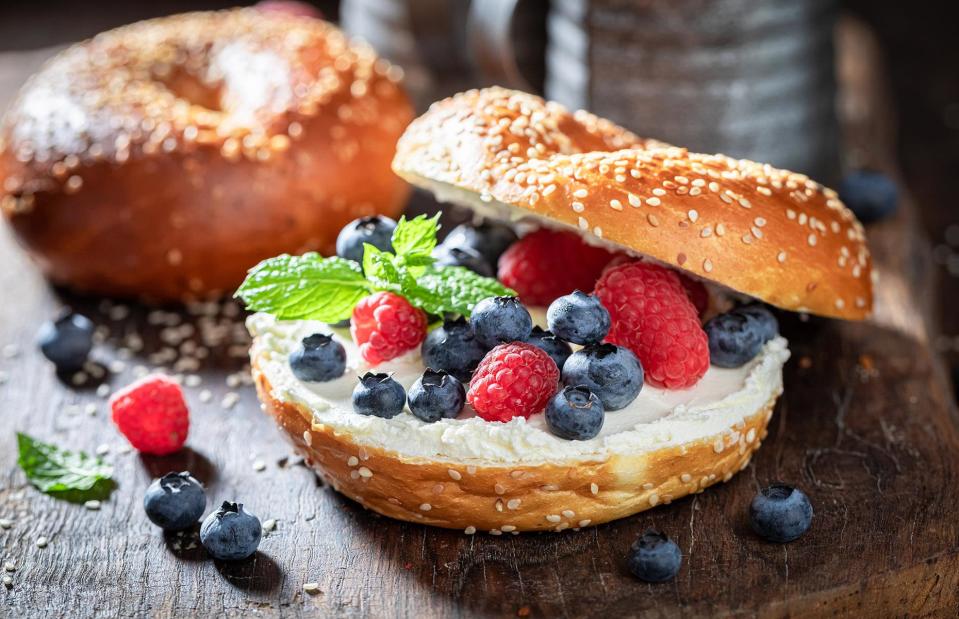
Shaiith/Shutterstock
For years now we’ve been told to increase our protein intake, but that doesn’t have to mean loading up on protein bars and shakes or eating steak or chicken for every meal. A few quick and easy food swaps, along with some additions to your everyday snacks and meals, is all it takes. Qualified nutrition coach and personal trainer Devinder Bains explains how you can boost your protein intake with very little effort.
Why protein is important
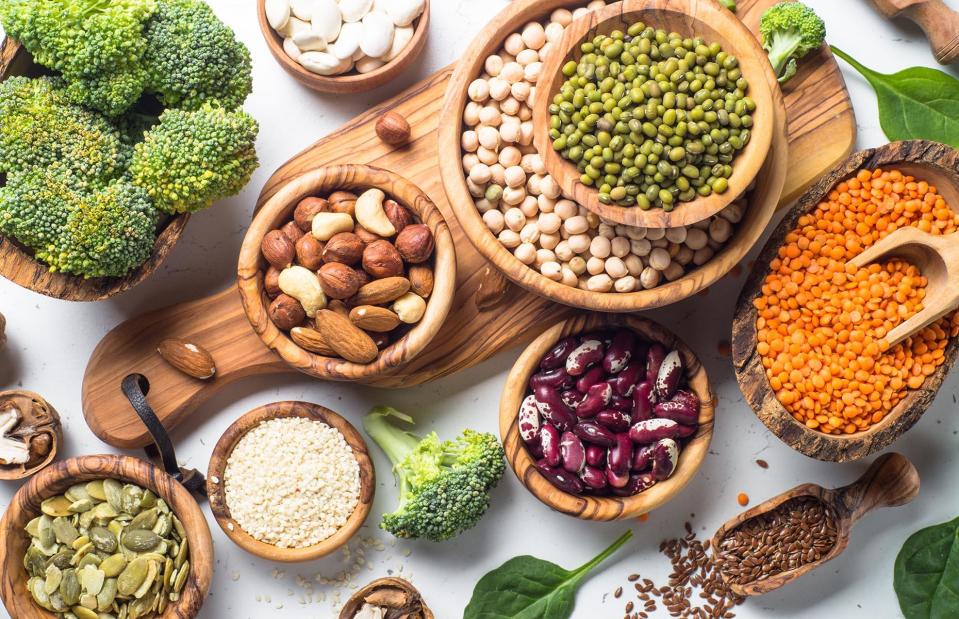
nadianb/Shutterstock
Proteins are made of amino acids, which are known as the ‘building blocks’ of life and are essential for the growth and repair of muscle, bone, cartilage, tissue and hormones. Protein also helps to carry oxygen around the body and aids with digestion. Most adults should be consuming 1.2-2oz (35-55g) of protein a day, depending on body weight and activity level. So, whether you’re recovering from an injury, upping your exercise regime or just want to look and feel healthier, a substantial intake of protein is essential.
Switch to Greek yogurt
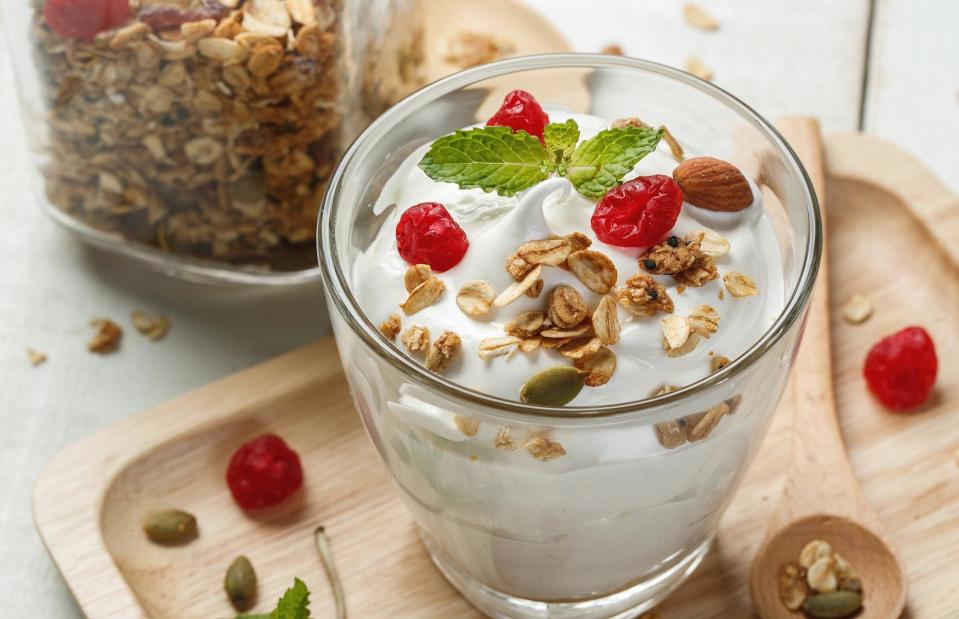
DoNot6Studio/Shutterstock
If you’re eating yogurt already, simply swap to the Greek (or Greek style) variety to instantly up your protein game. A 7oz (200g) serving of Greek yogurt contains 0.5-0.7oz (15-20g) of protein, which is roughly double that in natural yogurt. You could incorporate Greek yogurt into your breakfast, spooning it on your cereal, eating it with a bowl of fruit or adding it to a smoothie. A dollop on your soup will also add velvety texture, in addition to the protein boost.
Swap rice for quinoa
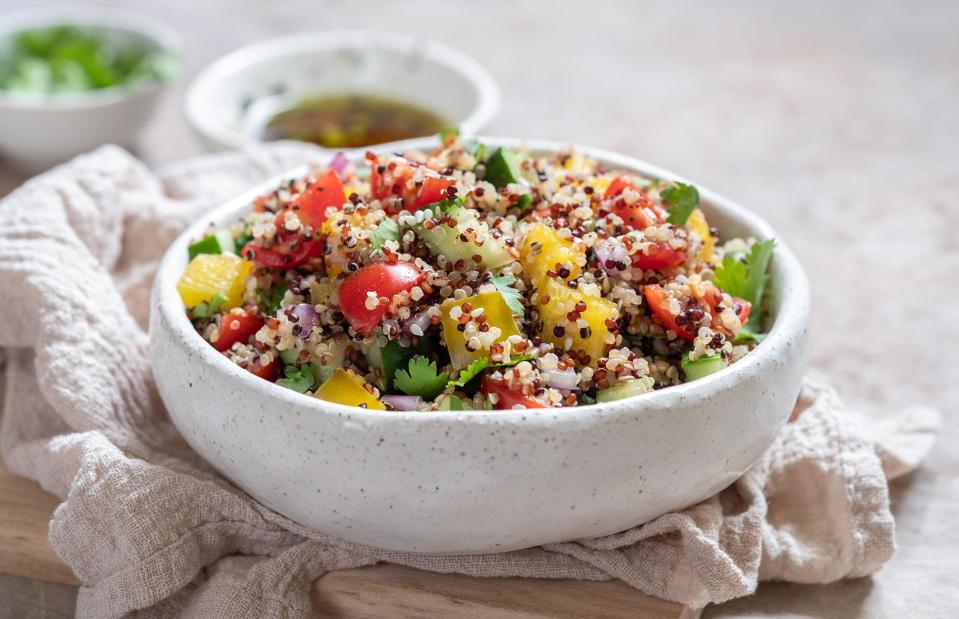
ElenaShashkina/Shutterstock
This superfood is not just packed with vitamins, minerals and antioxidants, it’s also a complete protein, which means it contains all the nine essential amino acids we need – relatively rare in non-meat foods. With seven times more protein than white or brown rice, quinoa is an easy swap to serve with curries, stews and stir-fries, and also makes an excellent base for salads.
Swap crisps for almonds
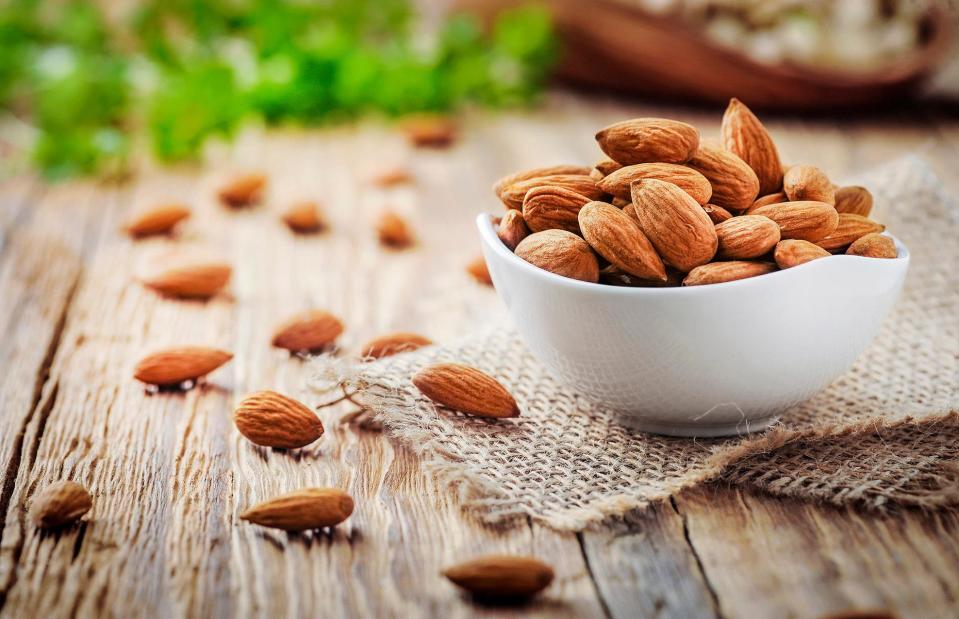
Krasula/Shutterstock
Almonds are tasty, high in fibre, full of vitamins and brilliantly portable, meaning they’re a protein-boosting snack you can enjoy anytime, anywhere – and an easy swap for crisps. A serving of around 20 almonds contains approximately 0.2oz (6g) of protein, so they’re a quick and easy way to add more protein to your diet. If you don’t fancy eating almonds whole, then sprinkle chopped almonds on salads, pastas or yogurts for added taste and crunch.
Use peanut butter as a dip
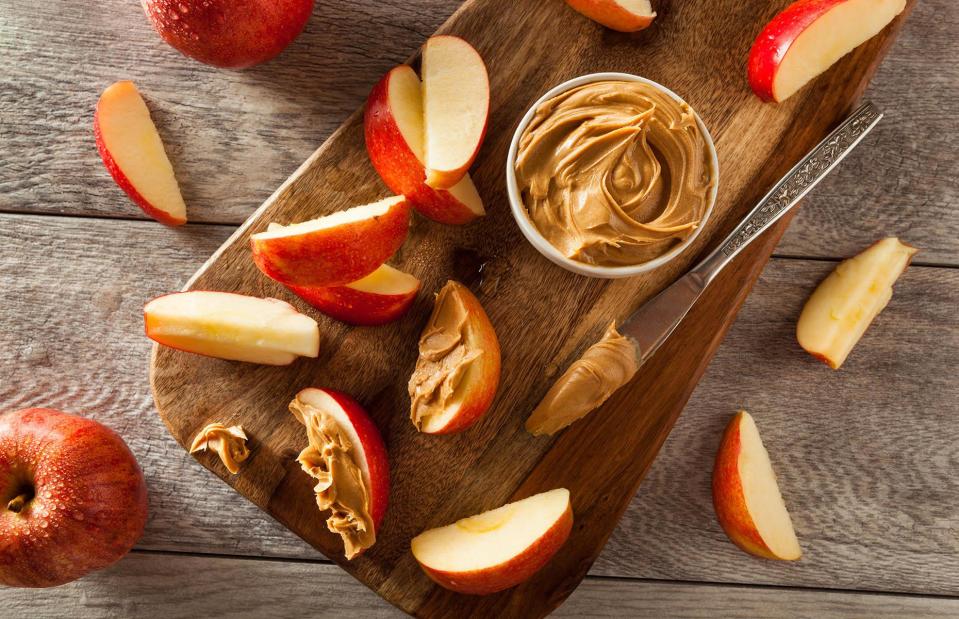
BrentHofacker/Shutterstok
This will be music to the ears of all peanut butter lovers – this delicious spread is super rich in protein, with around 0.15oz (4g) in every tablespoon, so pile it high on bagels and toast, mix it into smoothies, stir it into porridge and acai bowls, or use it as a dip for fruit and crudités. The creamy texture and nutty flavour makes peanut butter a really flexible addition to breakfasts and snacks.
Swap chicken for turkey
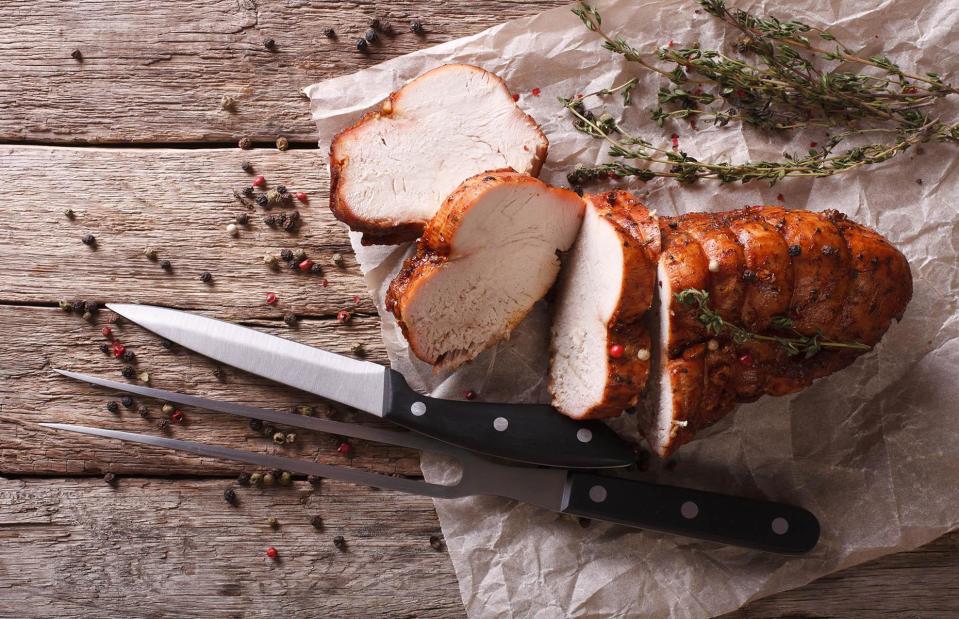
AsFoodStudio/Shutterstock
While most people know that chicken is one of the highest and healthiest sources of protein, not many know that turkey has practically the same amount of protein, but around half the amount of fat. From a roast turkey dinner to sandwiches, or as a healthier alternative to minced beef in homemade burgers or spaghetti Bolognese, there are plenty of ways to add turkey to your diet all year round.
Spread hummus instead of butter
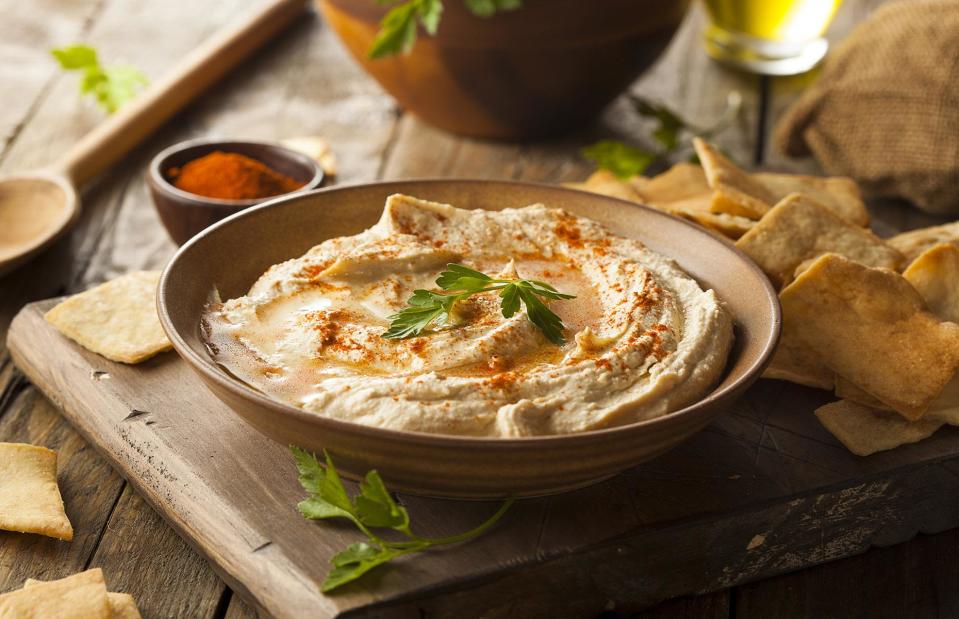
BrentHofacker/Shutterstock
Hummus makes a wonderful, protein-rich alternative to butter in almost any situation. Use as a spread on toast and sandwiches, add to veggie or meat wraps to add taste and texture, spoon on to salads instead of fatty dressings or use as a dip with crudités or its classic partner, pitta bread.
Super-charge your salad dressing
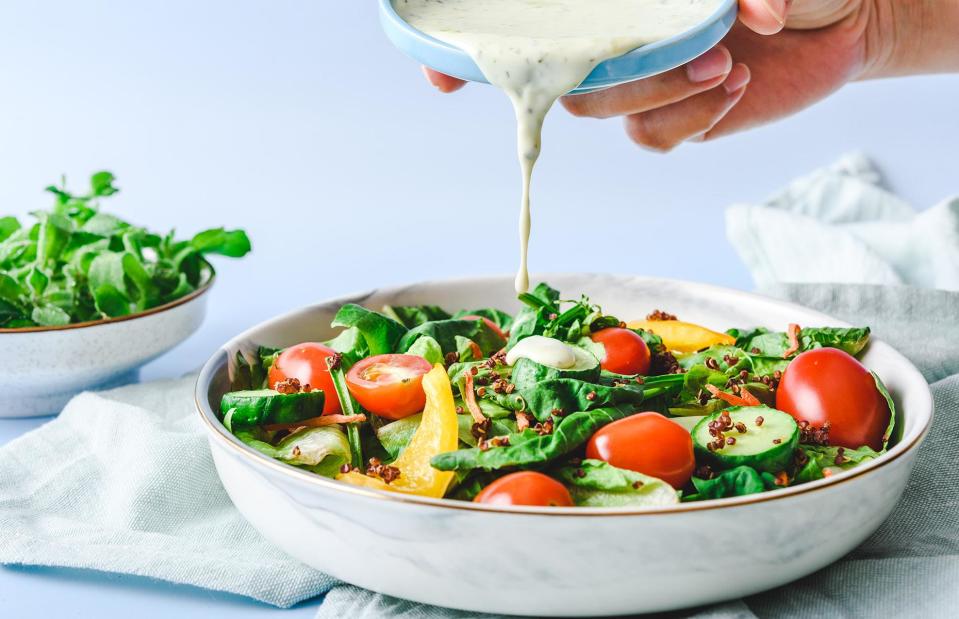
ChrisLayKK/Shutterstock
Boost your salad dressing with protein-rich ingredients for an easy way to up your intake. Cashews, for example, can be blended with water, lemon juice and herbs. Tahini can be drizzled on as it is, or blended with a little olive oil and lemon juice for a simple, yet delicious, protein-laden dressing.
Use your omelette as a wrap
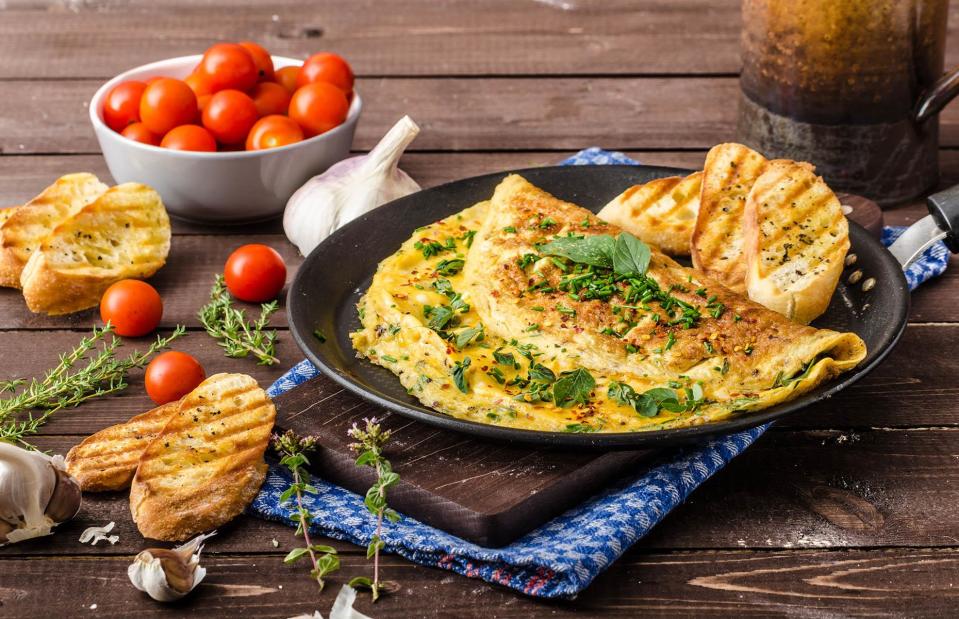
StepanekPhotography/Shutterstock
Eggs can be an easy way to get the protein you need, however you like them. For something different, make a plain or herby omelette and use it like a tortilla wrap, packing in whatever sandwich fillings you fancy. With each egg providing around 0.2oz (6g) of protein, it makes sense to add them to salads, pizzas, quiches, savoury muffins and any number variety of cakes and treats for an added protein boost.
Add pistachios to your breakfast
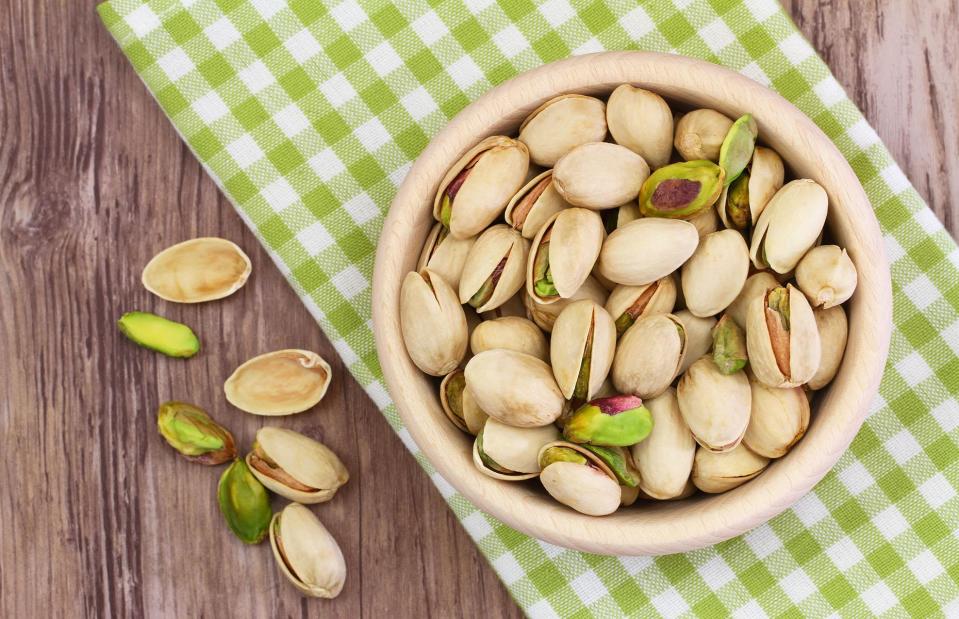
graletta/Shutterstock
This moreish little nut is a protein powerhouse. With 0.2oz (6g) per handful, pistachios are a good cupboard staple snack to have at home or carry with you for those random hunger pangs on the go. As well as making a delicious snack on their own, they're perfect for topping ice cream, breakfast bowls, yogurt, salads, curries and porridge, adding extra taste, texture and protein.
Add tofu to your veggie stir fry
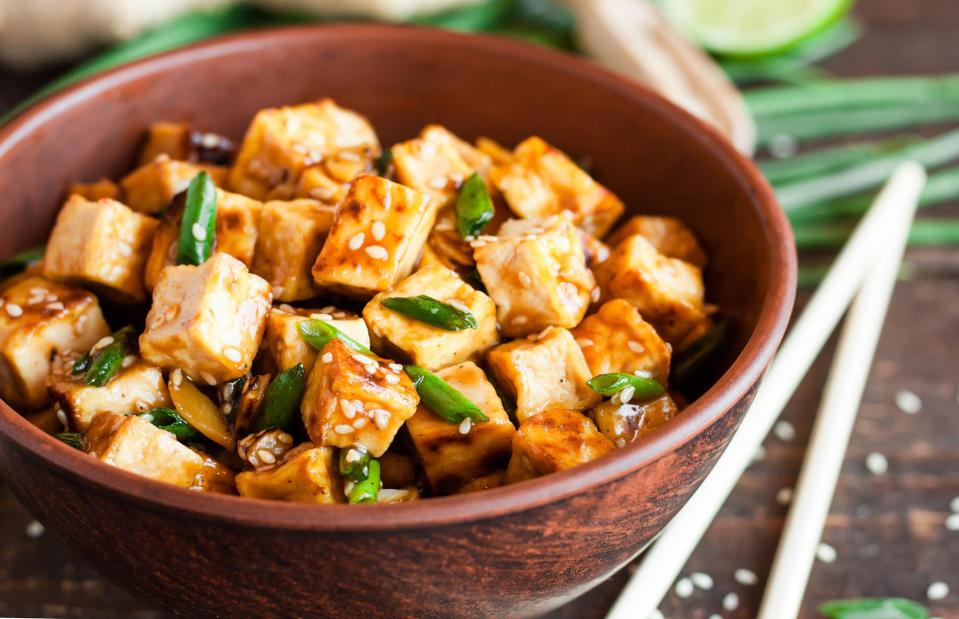
YuliiaHolovchenko/Shutterstock
Tofu is something of a protein powerhouse, and more versatile than you might think. Cube, slice or strip firm tofu and throw into stir-fries, curries and sandwiches, or mash and fry up with vegetables as an alternative to scrambled eggs. For something a little different, mix silken or dessert tofu into your fruit smoothie for an instant protein hit.
Season with nutritional yeast
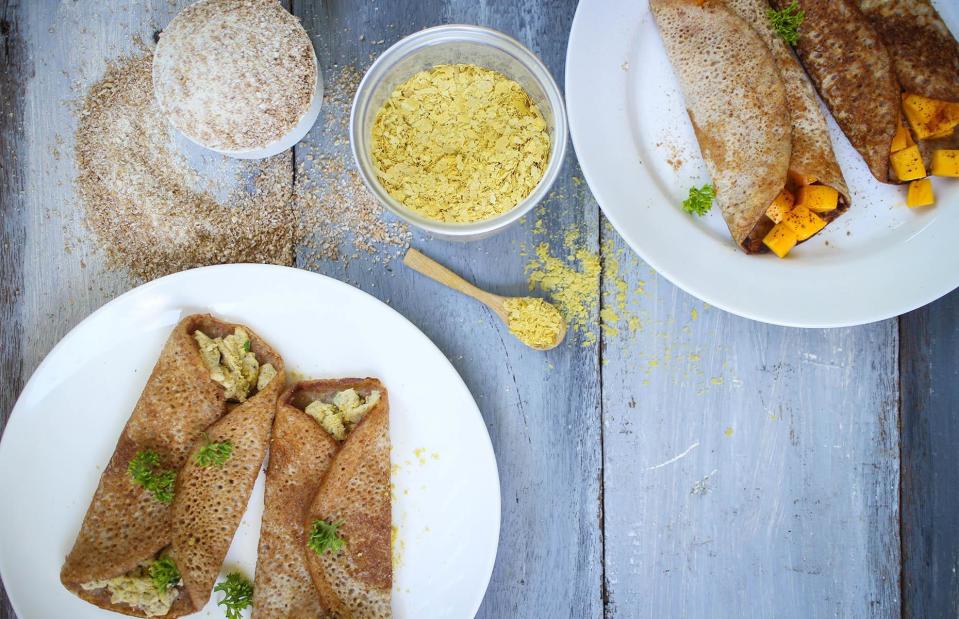
Supergal/Shutterstock
This is one of the easiest ways to get a protein boost. Simply buy a box of nutritional yeast (sold in most supermarkets) and sprinkle the flakes, granules or powder straight onto your pasta, casserole, stew or salad, adding a delicious cheesy flavour and approximately 0.3oz (8g) of protein for every 2 tbsp. Nutritional yeast is also packed with vitamins and minerals and an excellent source of fibre.
Add protein powder to smoothies
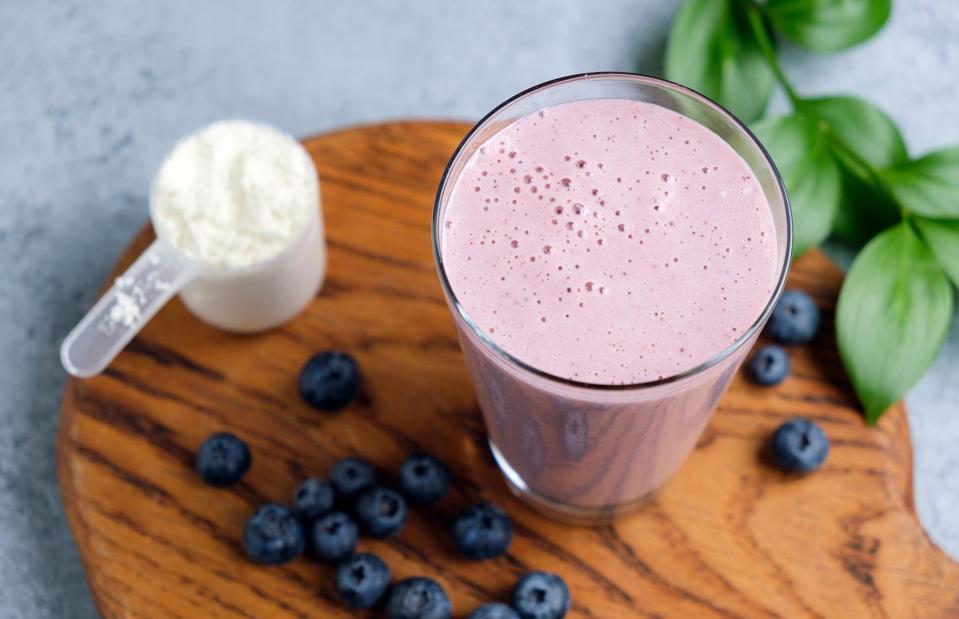
VladislavNoseekShutterstock
There’s more to protein powders than just making a shake and drinking it after a workout – although that is one of the easiest ways to add protein to your diet. You can also add to fruit smoothies, use instead of flour for pancakes, mix into yogurt and add to cakes.
Add an edamame starter to your meal
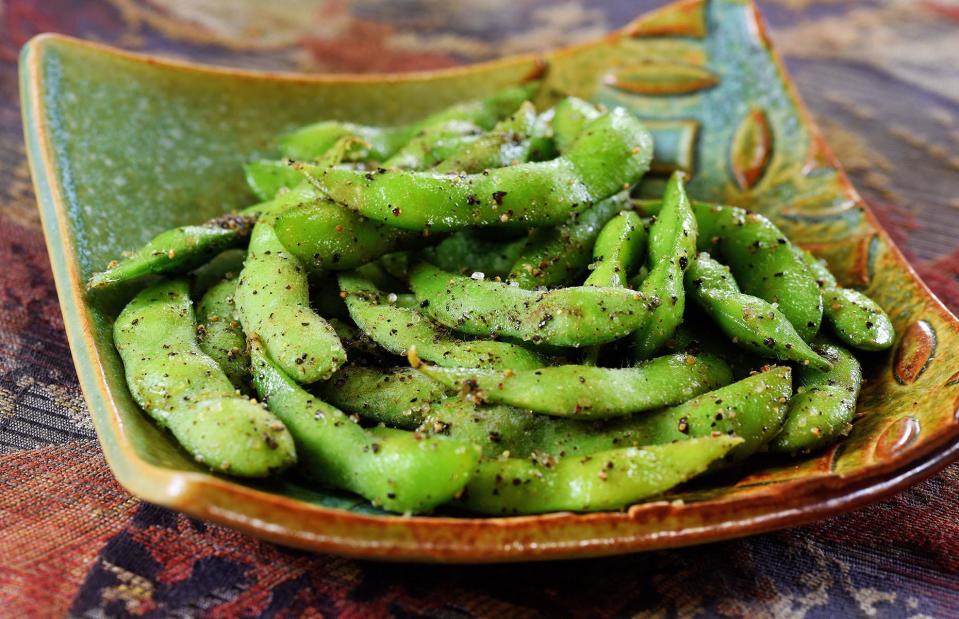
ManZu/Shutterstock
This superfood should be an essential part of everyone’s diet, as it’s rich in vitamins, minerals and fibre, as well as delivering a good whack of protein. Sold as whole or shelled beans, edamame can be eaten as a snack or starter, or added to stir-fries, stews or rice dishes. Prepare at home by boiling or steaming until tender, then sprinkle with a bit of sea salt or spices.
Make canned tuna your go-to fish
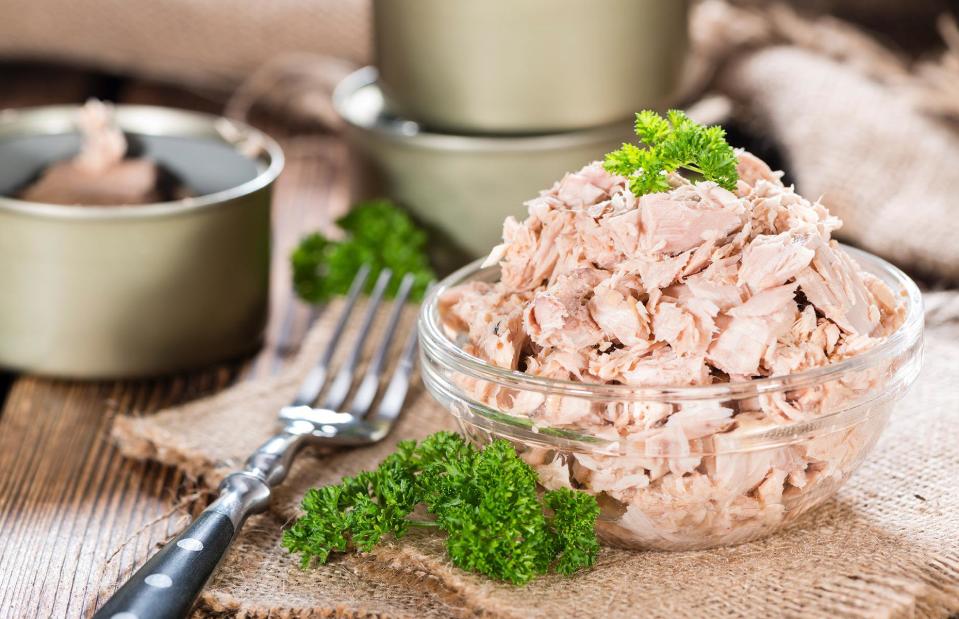
HandmadePictures/Shutterstock
Versatile and affordable, canned tuna is delicious in jacket potatoes, pasta dishes, salads and sandwiches. With a whopping 25% protein content, tuna is one of the most protein dense of all fish. It’s also low in fat, making it a hero staple for everyday meals.
Add chickpeas to any curry
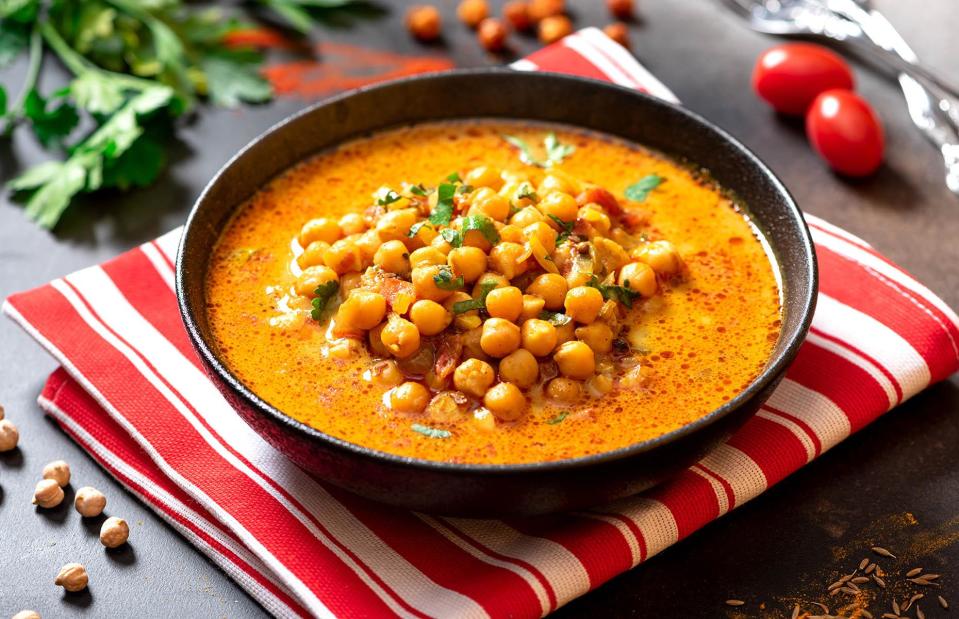
SvetlanaMonyakova/Shutterstock
There’s far more to chickpeas than just hummus. They’re a cheap, easy to store, canned food, with a protein content of nearly 20% by weight. They’re also a rich source of iron, folate and magnesium. Add to curries, stew or pasta sauces, or use cold when making salads for a tasty protein boost.
Add spinach to everything
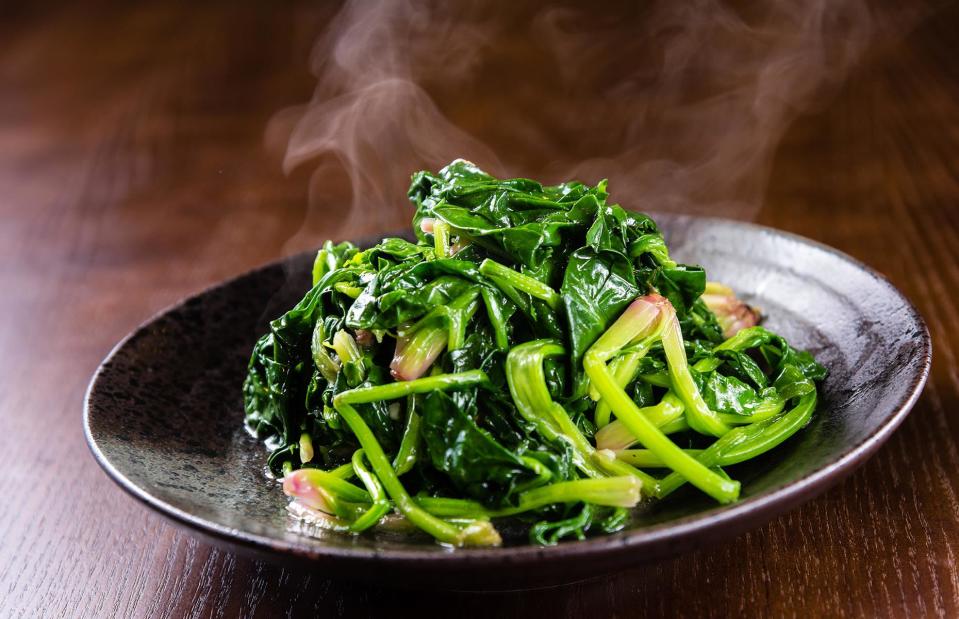
momo2050/Shutterstock
Spinach can be easily added to most dishes to get that extra hit of protein. It's also an excellent source of iron, potassium and vitamins A, C and K. Because cooked spinach wilts down, you can use large quantities when adding to omelettes, curries, stews and pasta sauces. It also makes an ideal salad base, or blend a handful of raw leaves into your fruit smoothie.
Add cottage cheese to your breakfast bagel
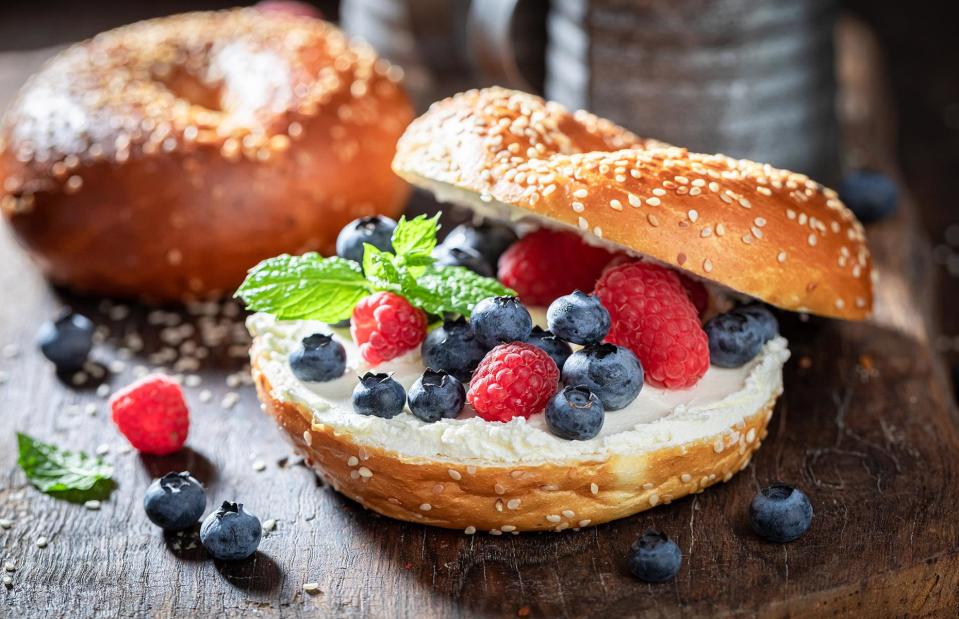
Shaiith/Shutterstock
Spread cottage cheese on your bagel for a tasty breakfast, or stir it into pasta sauces for extra creaminess. Cottage cheese is dense in protein and its mild flavour makes it an easy add-on when it comes to scrambled eggs, breakfast bowls, pancake toppings, overnight oats, sandwiches and salads. Or you can simply season to taste and use as a dip.
Batch cook lentil soups
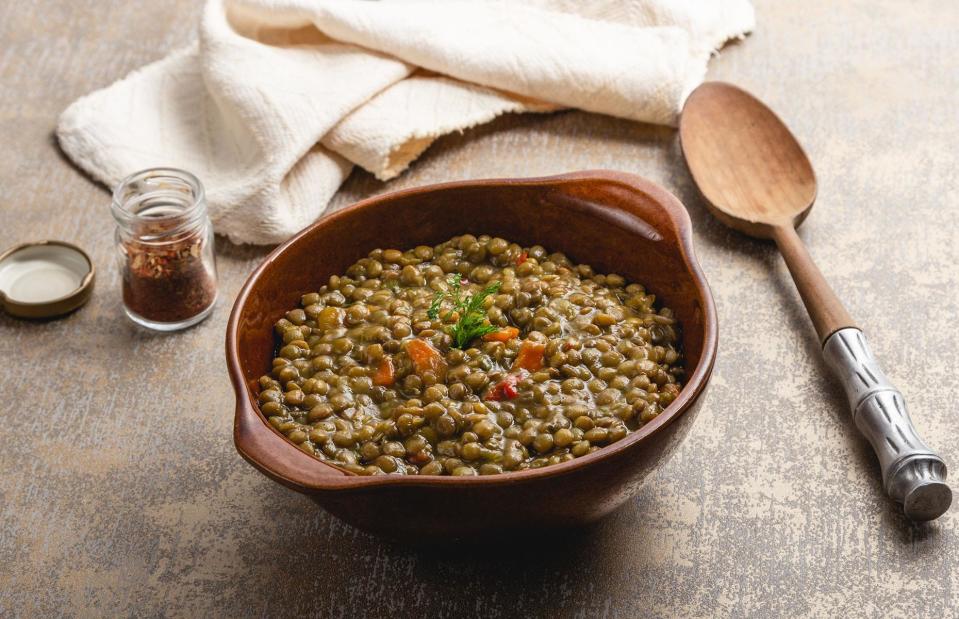
fotomova/Shutterstock
Lentils are one of the healthiest ways of getting your protein fix, as they’re also rich in fibre, vitamins and minerals. The superfood is also kind on the wallet and easily available in supermarkets. Use lentils in batch-cooked soups, curries or stews, or cook and use cold in salads, grain bowls or vegetable side dishes. If you're not a huge fan, just blend some lentils into sauces, boosting both the texture (by adding thickness) and the protein content.
Double you prawn portion
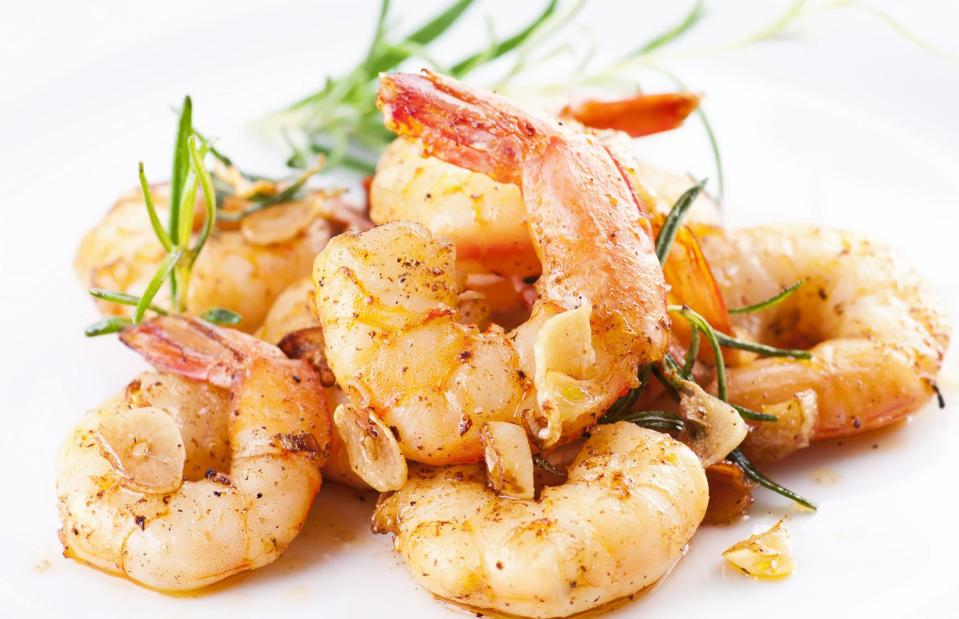
hlphoto/Shutterstock
Prawns are a great, tasty option for a protein boost, with around 20% of protein by weight. They're also virtually fat free, so doubling up your portion is a no-brainer. Whether you buy yours fresh or frozen, they'll be just perfect barbecued or grilled, or thrown into pasta sauces, paella, wraps and salads.
Blitz peas into soups and sauces
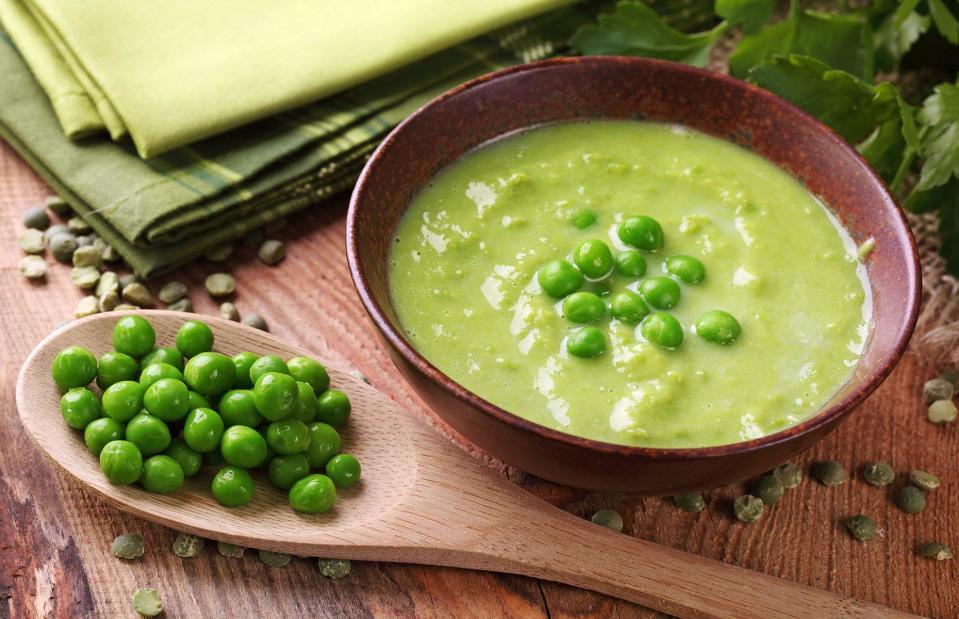
ElenaShweitzer/Shutterstock
They might be tiny in size, but peas pack a mighty punch when it comes to their protein content – at 0.3oz (8g) per cooked cup, peas contain more protein than nearly all other vegetables, hence their use in producing vegan protein powders. They’re also incredibly versatile and can be added to pastas, stews, rice, soups, omelettes, curries and noodle dishes. Not a pea lover? Blitz into soups and sauces, or even add to homemade pesto. You won't even know they're there.
Add black beans to every dish
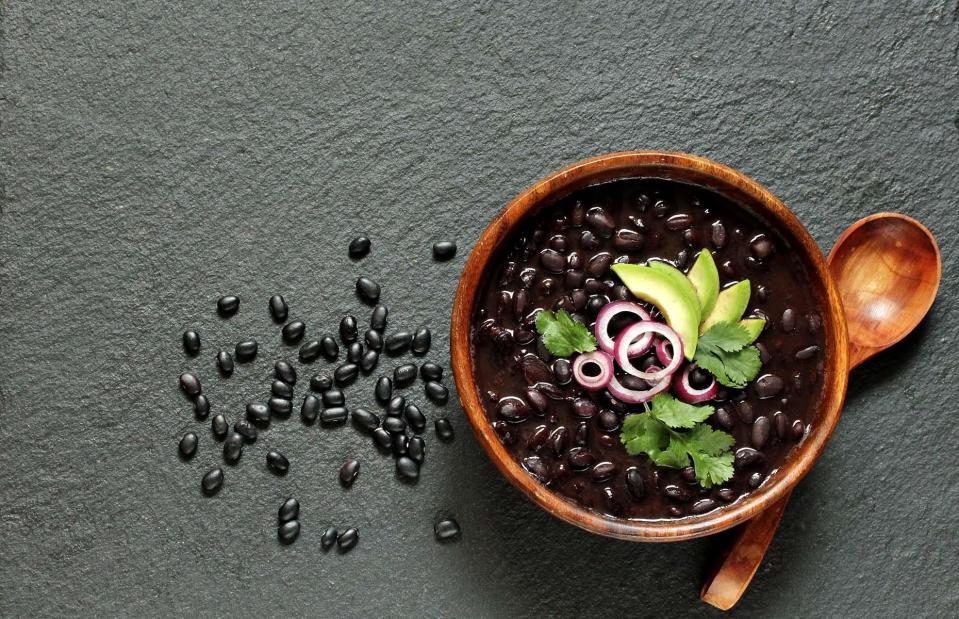
LyudmilaMikhailovskaya/Shutterstock
Black beans are packed with protein and are also a great source of fibre and carbohydrates. Batch cook them from dried, freezing boxes for later use, or buy tinned black beans for an even easier option. They add a delicious, nutty flavour and satisfying texture to taco and burrito fillings, soups, stews, curries and salads.
Just add milk
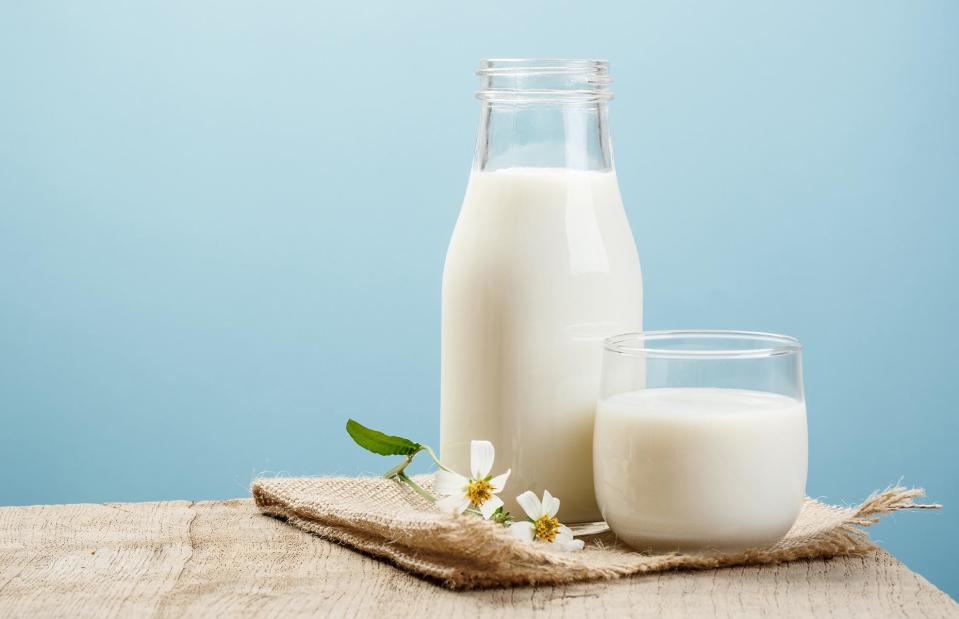
donot6studio/Shutterstock1
One of the simplest ways of getting your protein is in a glass of milk, with the average glass of whole milk packed with 0.3oz (8g) of the stuff (soya milk contains just a little less). Have a glass for breakfast or before bed, start adding more milk in your tea or coffee, or use milk instead of water in your protein shake for a power punch.
Make overnight chia seed puddings
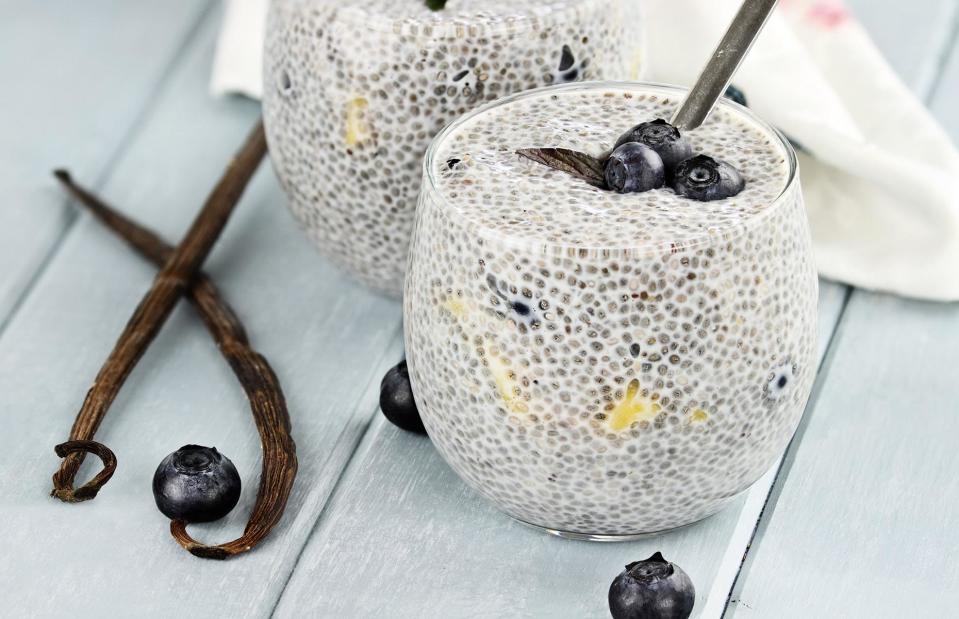
StephanieFrey/Shutterstock
They might be among the tiniest foods around, but chia seeds are packed with fibre, calcium, Omega 3 fatty acids (needed for brain function) and (yes) protein. The best way to maximise their protein content is by making overnight chia seed puddings, adding milk (dairy or non-dairy) and popping in the fridge. You can also sprinkle chia seeds on porridge, yogurt or salads.
Now discover the superfood swaps to boost your diet on a budget


